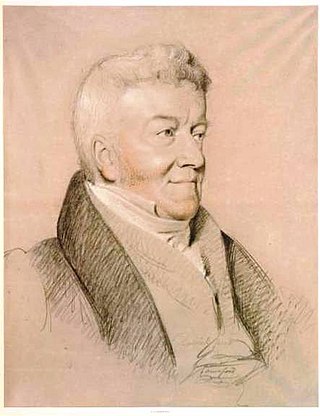Related Research Articles

Chelsea porcelain is the porcelain made by the Chelsea porcelain manufactory, the first important porcelain manufactory in England, established around 1743–45, and operating independently until 1770, when it was merged with Derby porcelain. It made soft-paste porcelain throughout its history, though there were several changes in the "body" material and glaze used. Its wares were aimed at a luxury market, and its site in Chelsea, London, was close to the fashionable Ranelagh Gardens pleasure ground, opened in 1742.

In pottery hausmaler is a term for the artist, the style, and the pieces in hausmalerei, the process of buying pieces of pottery as plain "blanks", and then painting them in small workshops, or the homes of painters, before a final firing. In European pottery of the 17th to 19th centuries this was at certain times and places a significant part of production, and the decoration could be of very high quality. In England this was referred to as "outside decoration" and was also very important in the 18th and early 19th century, with some revival in the 20th.

The Royal Crown Derby Porcelain Company is the oldest or second oldest remaining English porcelain manufacturer, based in Derby, England. The company, particularly known for its high-quality bone china, having produced tableware and ornamental items since approximately 1750. It was known as 'Derby Porcelain' until 1773, when it became 'Crown Derby', the 'Royal' being added in 1890.

Henry Bone was an English enamel painter. By c. 1800 he had attracted royal patronage for his portrait miniatures This patronage continued throughout the reigns of three monarchs; George III, George IV and William IV. In his early career he worked as a porcelain and jewellery painter. He was elected a Royal Academician and produced the largest enamel paintings ever seen up to that time.

William John Coffee (1774–1846) was an English artist and sculptor who worked in porcelain, plaster, and terra cotta. He also worked in oil paint, although this was not the medium for which he became famous. His early career was as a modeller for William Duesbury at the china factory on Nottingham Road in Derby, England. The latter part of his life was spent in America.

William Billingsley (1758–1828) was an influential painter of porcelain in several English porcelain factories, who also developed his own recipe for soft-paste porcelain, which produced beautiful results but a very high rate of failure in firing. He is a leading name associated with the English Romantic style of paintings of groups of flowers on porcelain that is sometimes called "naturalistic" by older sources, although that may not seem its main characteristic today.

Thomas Frye was an Anglo-Irish artist, best known for his portraits in oil and pastel, including some miniatures and his early mezzotint engravings. He was also the patentee of the Bow porcelain factory, London, and claimed in his epitaph to be "the inventor and first manufacturer of porcelain in England," though his rivals at the Chelsea porcelain factory seem to have preceded him in bringing wares to market. The Bow porcelain works did not long survive Frye's death; their final auctions took place in May 1764.

The Bow porcelain factory was an emulative rival of the Chelsea porcelain factory in the manufacture of early soft-paste porcelain in Great Britain. The two London factories were the first in England. It was originally located near Bow, in what is now the London Borough of Tower Hamlets, but by 1749 it had moved to "New Canton", sited east of the River Lea, and then in Essex, now in the London Borough of Newham.

William Duesbury (1725–1786) was an English enameller, in the sense of a painter of porcelain, who became an important porcelain entrepreneur, founder of the Royal Crown Derby and owner of porcelain factories at Bow, Chelsea, Derby and Longton Hall.

Ramsay Richard Reinagle was an English portrait, landscape, and animal painter, and son of Philip Reinagle.

Bernard Mulrenin, was an Irish painter best known for his miniatures.

John James Barralet was an Irish artist who spent the later part of his career in the United States.

John Comerford was an Irish miniature painter active in Kilkenny and Dublin. He exhibited in London at the Royal Academy in 1804 and 1809.
John Haslem (1808–1884), was an English china and enamel painter, and writer. He painted many portrait miniatures of Queen Victoria, the Royal Family and other nobility.

The production of Derby porcelain dates from the second half of the 18th century, although the authorship and the exact start of the production remains today as a matter of conjecture. The oldest remaining pieces in the late 19th century bore only the words "Darby" and "Darbishire" and the years 1751-2-3 as proof of place and year of manufacture. More important is the fact that the production of porcelain in Derby predates the commencement of the works of William Duesbury, started in 1756 when he joined Andrew Planche and John Heath to create the Nottingham Road factory, which later became the Royal Crown Derby.。
William Derby (1786–1847) was an English portraitist, miniature painter and copyist.
William Duesbury (1763–1796), was the owner of Royal Crown Derby pottery works.

Thomas Foster was an Irish portrait painter.
Thomas James Mulvany (1779–1845) was an Irish painter and keeper of the Royal Hibernian Academy.
William Riviere (1806–1876) sometimes Rivière, was an English painter and art educator.
References
- 1 2 3 4 "Kean, Michael". Oxford Dictionary of National Biography (online ed.). Oxford University Press. doi:10.1093/ref:odnb/15206.(Subscription or UK public library membership required.)
- 1 2 Cust, Lionel Henry (1892). . In Lee, Sidney (ed.). Dictionary of National Biography . Vol. 30. London: Smith, Elder & Co. p. 266.
- ↑ Kean, Michael A Dictionary of Irish Artists, 1913. LibraryIreland, accessed 31 July 2017.